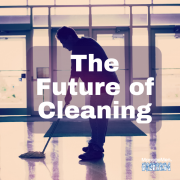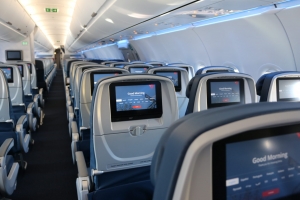Cleaning Classrooms Safely: A Teacher’s Checklist [with infographic]
With the topic of reopening schools leading many conversations right now, we’ve had a lot of questions about how teachers and administrators can work with custodial teams to make sure classrooms and common areas to limit the potential for COVID to spread on hard surfaces.*

Whether you work in a school or know a student who will be returning to the classroom this fall, these steps can help teachers keep classrooms clean and safe:
- Clean, then disinfect. Kids make messes. And with calls for students to eat lunch in the classroom, those messes will only increase. It’s important to know that in order for a disinfectant to work, you must first clean the surface to remove any foreign substances or barriers and then apply the disinfectant.
- Focus on touch points. Little hands are constantly touching, but what are some of the most often touched surfaces within your classroom? Faucet handles, chair backs, keyboards, door handles and desks are all items that should be disinfected throughout the day to limit the opportunity for virus spread.
- Follow label instructions. Just like teachers need time after a long day, disinfectants also need time to sit and dwell in order to work effectively. How much time is indicated on the back of the bottle and can range between 2 to 10 minutes.
- Launder cleaning cloths regularly. Disposable wipes are hard to find right now, so a lot of teachers will be using donated disinfectant sprays or spray from the custodial team. If using your own cleaning cloths, make sure to use a fresh cloth each day to avoid cross contamination.
- Safely store cleaning chemicals. Make sure curious hands don’t find cleaning chemicals and be sure to lock all disinfectant supplies in a secure area.
- Use bleach in a pinch. With wipes and ready-to-use disinfectants in short supply, the CDC recommends using a diluted bleach solution to disinfect appropriate hard surfaces. To make a solution, mix 5 tablespoons (1/3rd cup) bleach per gallon of room temperature water OR 4 teaspoons bleach per quart of room temperature water.
- Clear desks and tables nightly. Stack books, papers and supplies on desks to keep tables and other surfaces clear for custodial teams to disinfect in the evenings. A lot of custodial teams will be working with limited resources, so every little bit helps.
* As the CDC notes, hard surface transmission is not thought to be the primary way the virus spreads, but recommends several cleaning and disinfection protocols to maintain healthy environments. These tips are designed to supplement regular cleanings performed by custodial teams in a school. Clean schools are critical for learning both now and once the pandemic is over.


